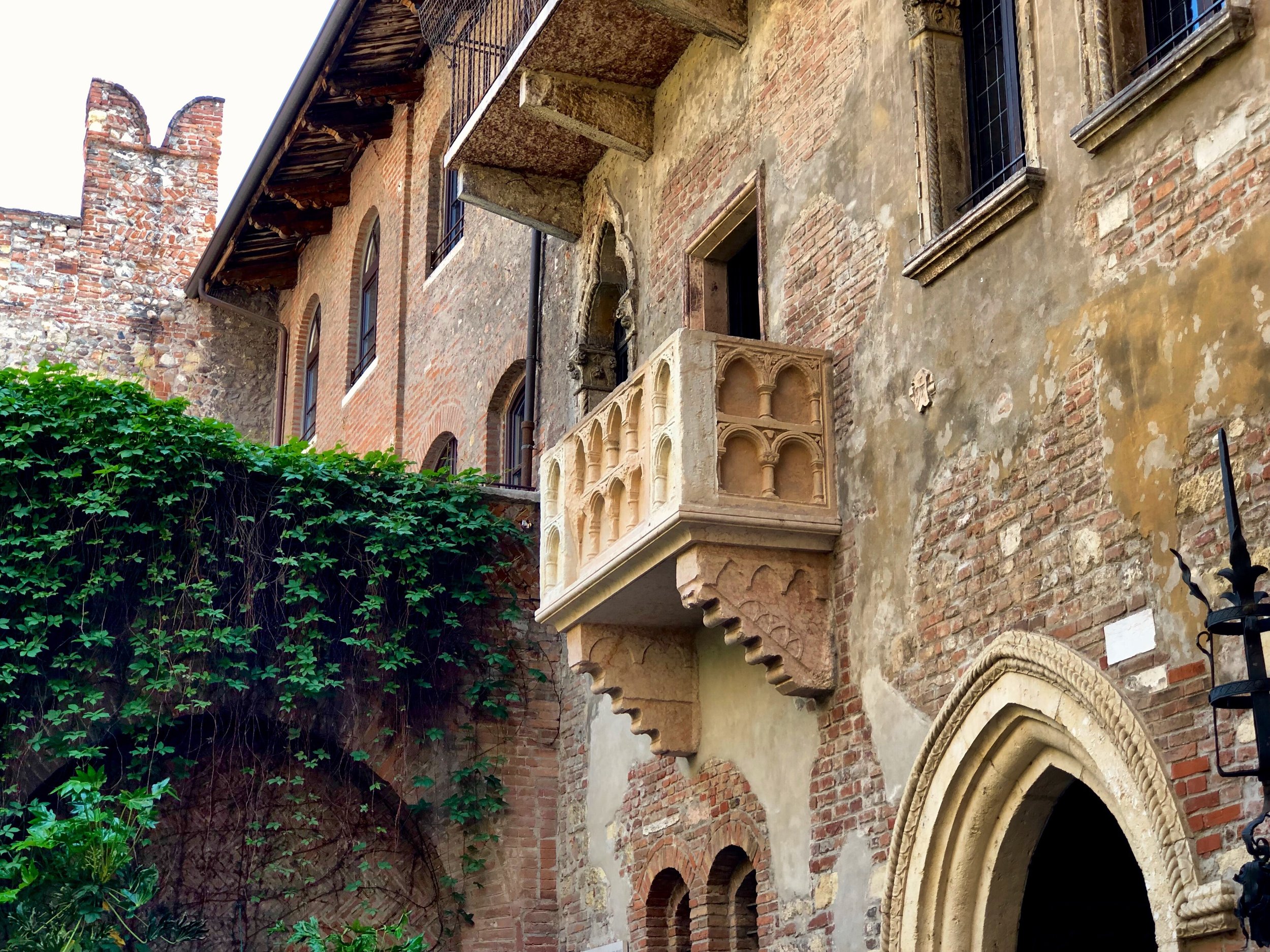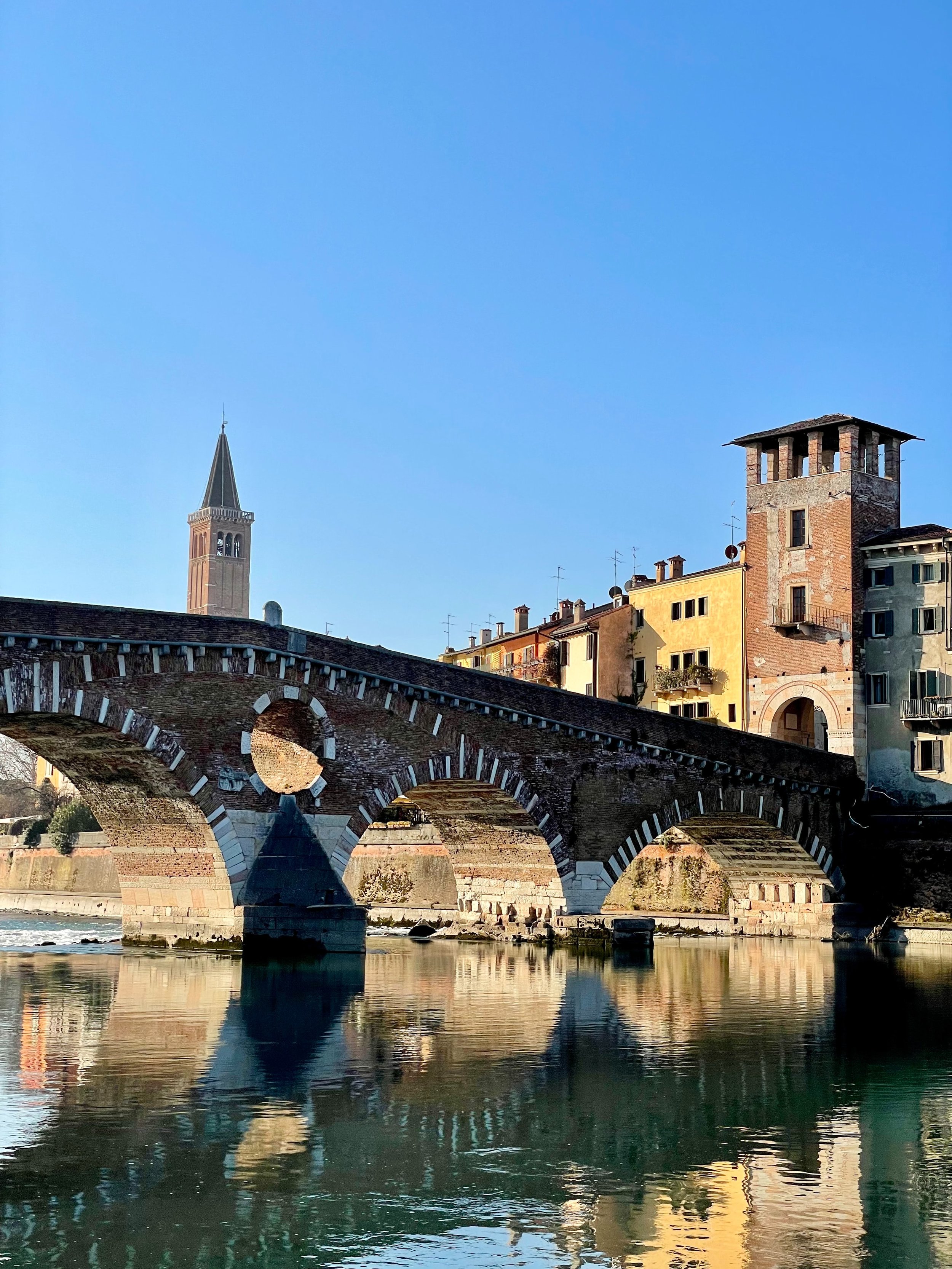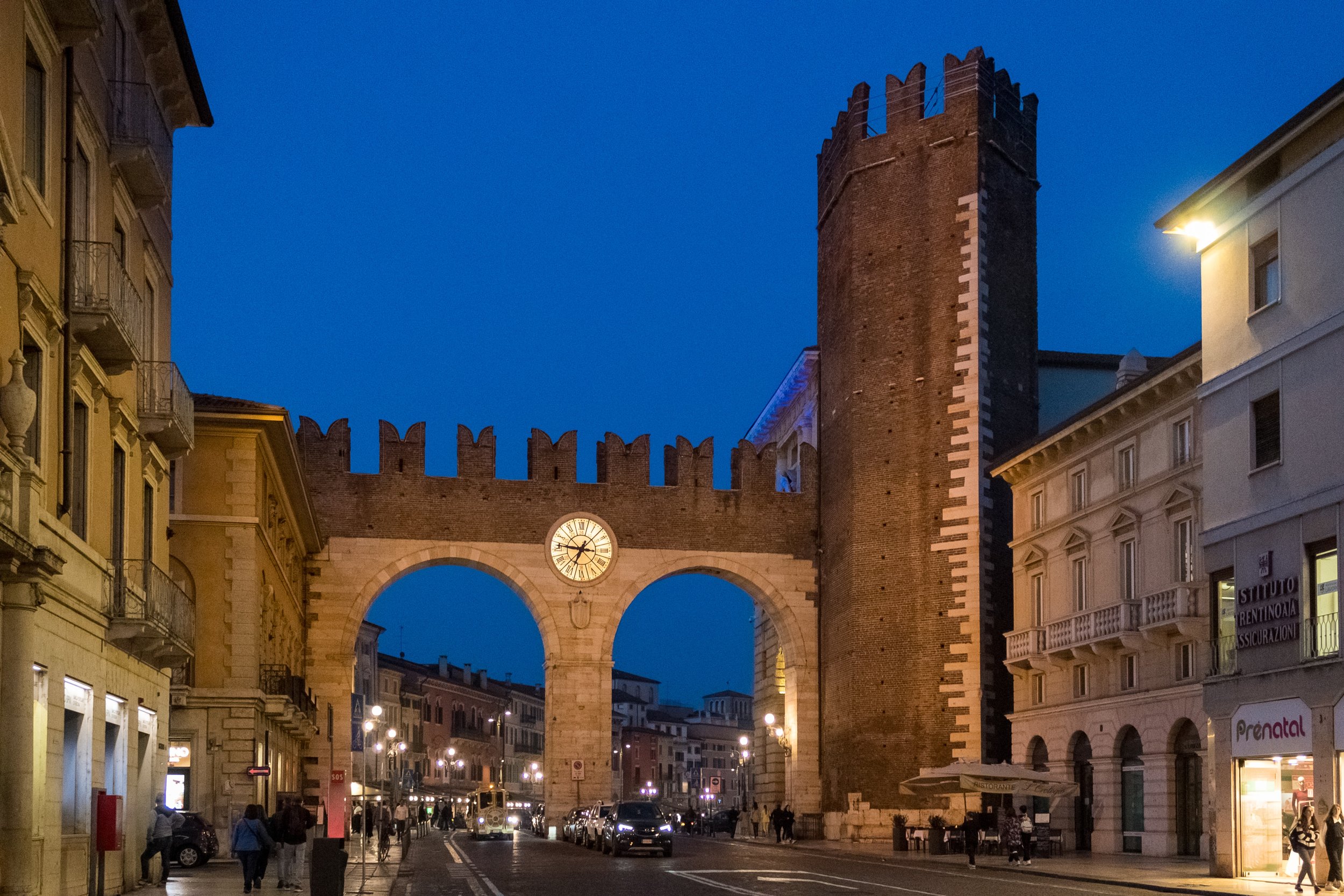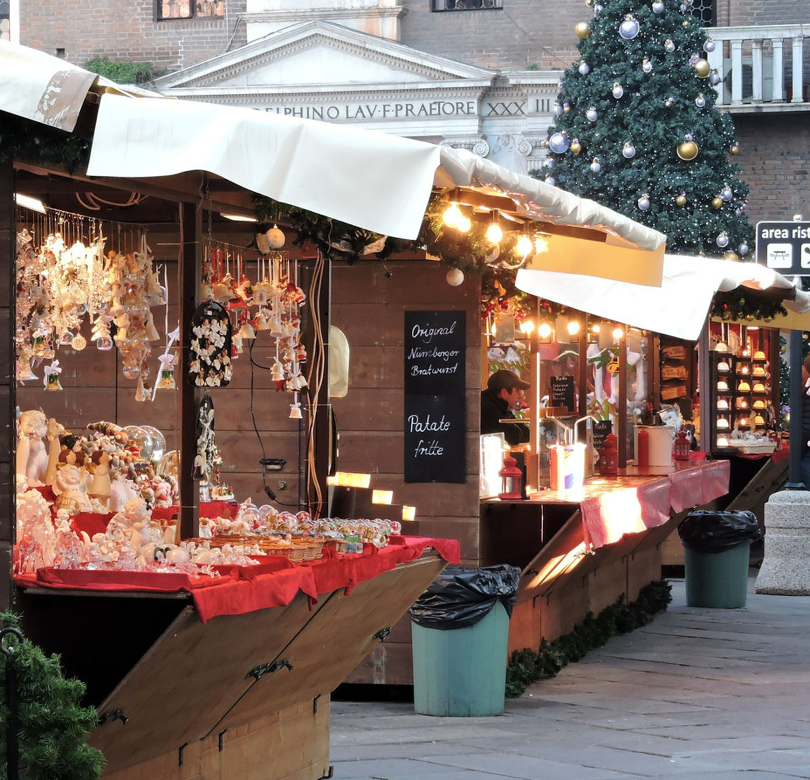THE SWEET ITALIAN DEBATE, PART 2:
SPOTLIGHT ON PANDORO & VERONA
Star-Shape vs. Dome Shape
If you find yourself on the other side of the Italian Christmas cake debate, and your pan of choice is pandoro—the soaring star-shaped cake with a delicious golden brioche-like centre and heavenly vanilla, buttery aroma—then head towards fair Verona and treat yourself to an artisanal tour of the capital of golden bread in its birthplace. A mere 137 kilometres from Milan in the Veneto region, tour guide Francesca Amaro takes us on a pandoro-based tour of the romantic city that combines the historic highlights with the magical atmosphere of Christmas. “An authentic Verona Christmas begins with the feast of Santa Lucia, celebrated on December 13th, which coincides with the opening of the Christmas markets,” says Amaro.
Verona: The Capital of Pandoro
“Starting at Piazza Brà with its arena, a show-stopping steel Comet Star is erected there during the holidays and it is the biggest architectural sculpture in the world,” she claims. There are also more than 400 nativity scenes exhibited from all over the world, housed underneath the Roman amphitheatre. Verona offers an enchanting historic centre with some of the most breathtaking buildings, squares and bridges, which include Piazza delle Erbe, Adige bridge, Juliet’s balcony, Castel Vecchio and Basilica San Zeno Maggiore. Laced between all these important landmarks in fair Verona: “ [There] are artisanal pastry shops where you can stop and taste the best pandoro year-round, such as Turco 1909 on Corso Santa Anastasia,” according to Amaro. “It is essential to visit the Melegatti’s historical building located in the nearby Corso Porta Borsari where the pandoro was first created.” She adds that when you look up, you will see a pandoro made of stone flanking the structure’s rooftop.
E l’à inventà el pandoro
In the late 1800s, the Kingdom of Italy granted local pasticciere Domenico Melegatti a three-year exclusivity to produce the pandoro cake. During the reign of the Republic of Venice, in the 15th century, Venetian bakers topped cone-shaped cakes with gold, calling them pan de oro. From those luxurious roots, pandoro’s history moves into Verona in the early 19th century and meets with the area’s traditional Christmas cake, nadalin, a flat cake with rounded points, the precursor to the modern pandoro.
Nadalin, the Verona invention that inspired Pandoro
Melegatti may have trademarked the pandoro on October 14, 1894, however, Pasticceria Perbellini, a sixth-generation, family-run artisanal pastry business in Verona since 1872 takes its rightful place as authentic pandoro makers in Verona from its onset. Founded by Luigi Perbellini, around the same time the pandoro was patented, his son Giovanni created the ever-popular Offella d’Oro, which was also adapted from the ancient Veronese Christmas cake, nadalin. “The designer of the pandoro mould was the painter Angelo Dall’Oca Bianca (1884), who took inspiration from nadalin’s shape,” says Andrea Perbellini, in charge of sales and marketing. “Pasticceria Perbellini still holds some original moulds dating back to the end of the 19th century used to produce pandorini, which derive from the Melegatti laboratory where Giovanni Perbellini worked before moving to Bovolone.” It’s just 20 km from Verona.

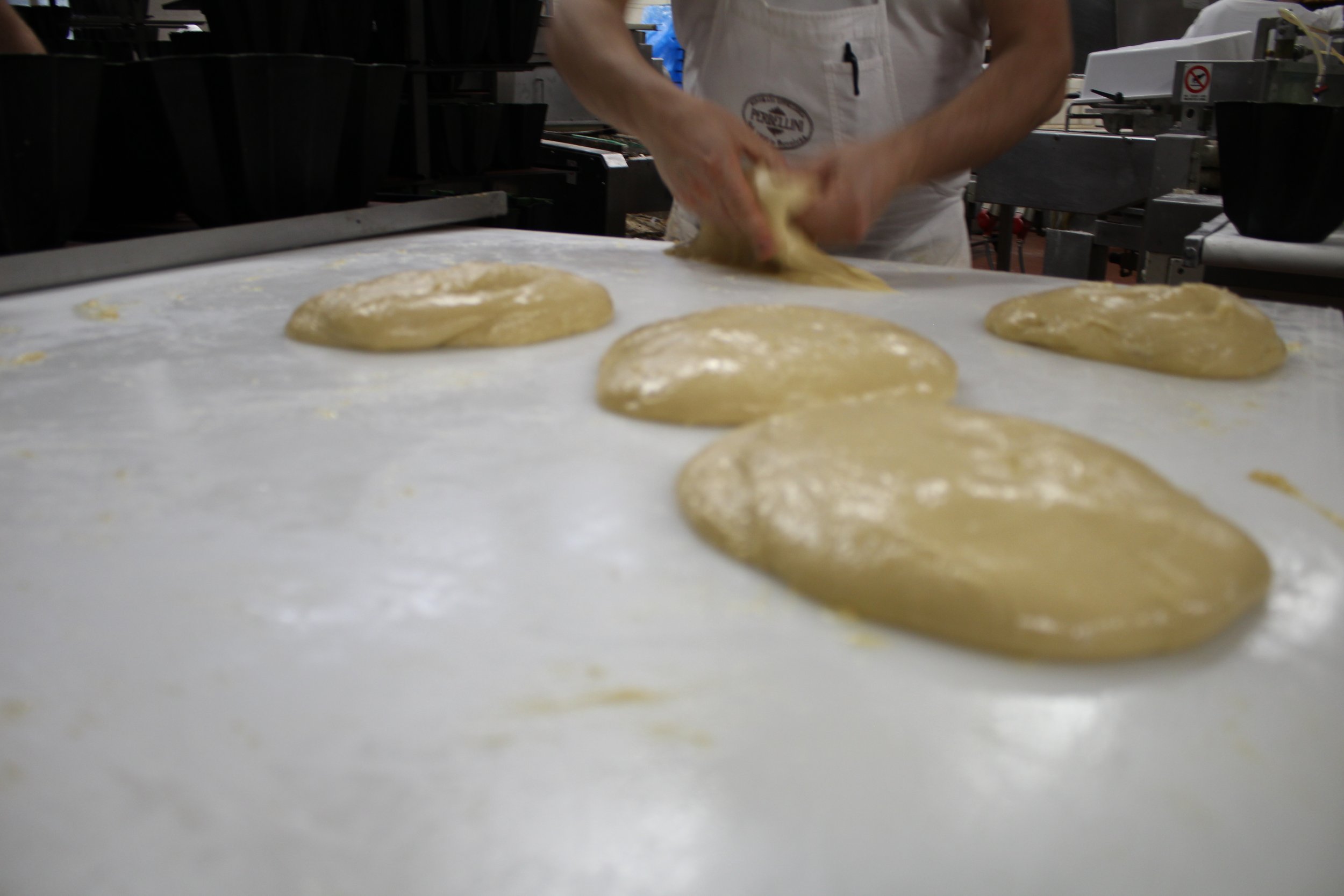
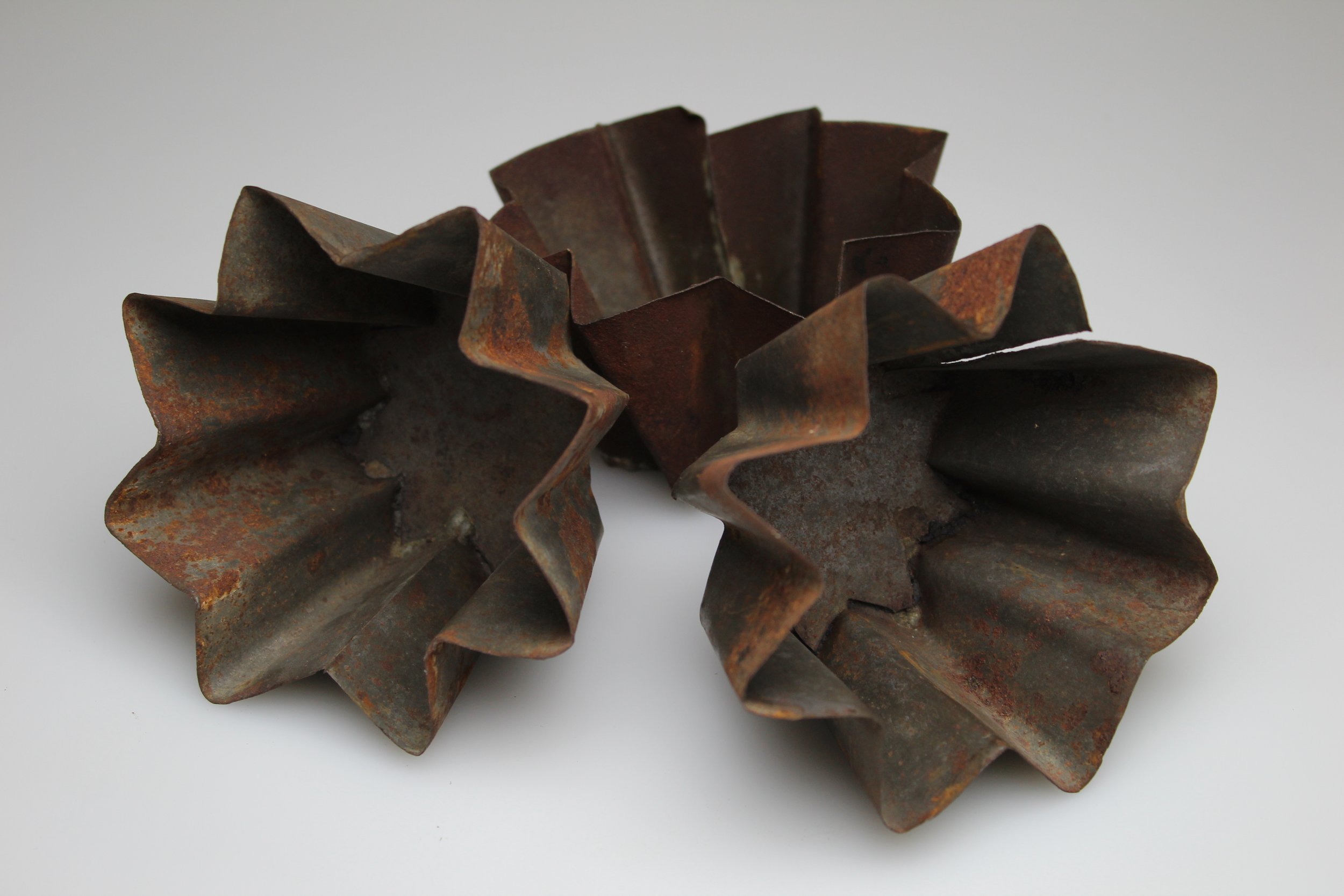

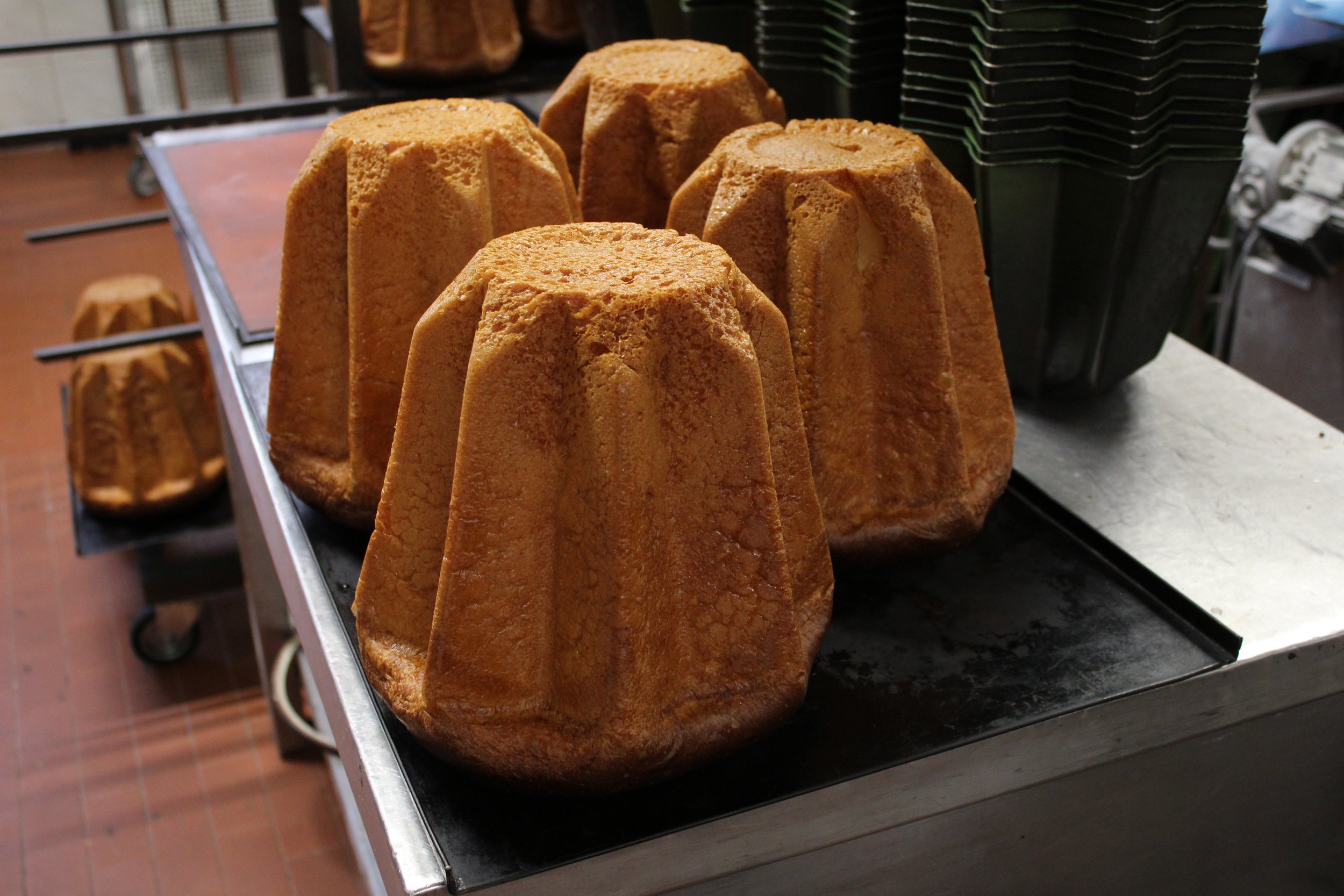

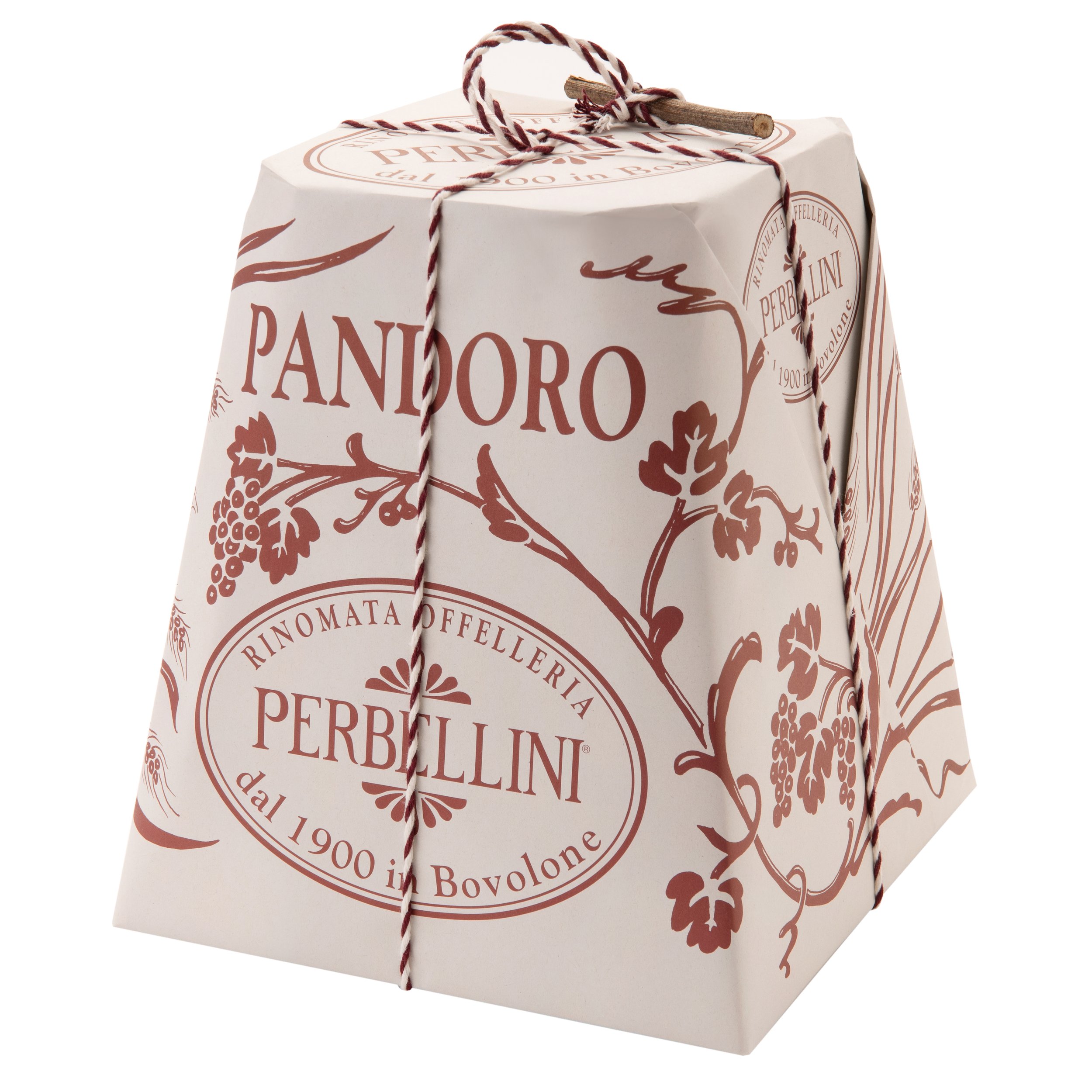
Path to Pandoro Perfection
Similar to its pan competitor, the road to pandoro perfection “starts with the coveted sourdough starter, which has been refreshed for more than 50 years,” Perbellini confirms. Flour, eggs (more yolk than whole egg to get that golden hue), sugar, vanilla extract and butter are added and the dough is mixed to form a homogeneous texture that is left to rise for 24 hours. When ready, it is portioned and shaped by hand in a technique called la pirlatura and then placed in the individual star-shaped moulds and again left to rise for another 24 hours before baking. “The cooking time is about 50 minutes, and once cooled, the product is removed from the mold and hand-wrapped in our signature white and red packaging and closed with a ribbon to which a vine stick is tied, as was done in 1891 to facilitate the grip,” describes Perbellini.
“Fewer and fewer pastry shops produce pandoro due to the complexity of the preparation and cooking, so most pasticcerie prefer to focus on panettone as it is easier to produce.”
And the Winner Is...
Found in high-end grocery stores and wine bars throughout Italy, France, Germany, the United Kingdom and Spain, Perbellini reveals that the artisanal pastry company also makes panettone. When asked which one he prefers, he quickly responds, “Pandoro smells like home.” He confesses he also loves panettone. As far as Italians and their preference? He noted a recent spike in the consumption of pandoro. He doesn’t equate this uptick in sales as an indicator of one classic Christmas cake’s superiority over the other, instead he explains it like this: This trend is certainly linked to the fact that fewer and fewer pastry shops produce pandoro due to the complexity of the preparation and cooking, so they prefer to focus on panettone as it is easier to produce.
The other pan, whichever one you prefer…panettone and pandoro are both synonymous with Christmas.
Photo courtesy of Gruppo Terroni
In the end, a glimpse inside the history of these two duelling desserts, their places of origin and the expert craftsmanship required to keep their authenticity in the 21st century, Luca Rotatori, head baker at SUD Forno Produzione e Spaccio in Toronto points out that “the act of sharing them with family and friends during the holidays is more a symbol of unity rather than division, and that is also what makes them so special.”
Giovanni Perbellini invented l’Offella d’Oro in Verona in 1891. A Veronese dessert also inspired by the Nadalin.
Top 5 Pasticcerie for Artisanal Pandoro in Verona
Pasticceria Perbellini: Via Vittorio Veneto, 46, 37051 Bovolone VERONA
Pasticceria Flego: Corso Porta Borsari, 9,
Pasticceria Caffe’ Begali: Via Mantovana, 83 37137
Pasticceria Tomasi: C.so Milano, 16A, 37138
Michele Turco 1909: Corso Sant’Anastasia 2, 37121
Team Pandoro: When in Verona, call Licensed Tour Guide, Francesca Amaro: +39 3402881040
Team Panettone: For a customized tour of Milan or anywhere in Italy, go to designyouritaly.com


